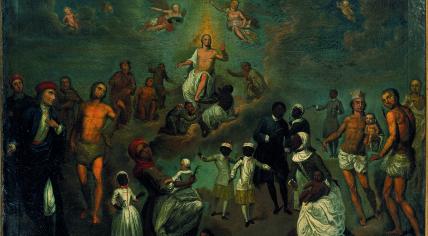
Exhibition on Christianity and slavery at museum in Utrecht
Museum Catharijneconvent in Utrecht can display an exceptional piece at the end of this month: a very early example of the emancipation of enslaved people. It is a letter from 1739, written on behalf of 650 enslaved people. It was set up on the Caribbean island of Saint Thomas, where Danes had succeeded Dutch colonists.
The senders, in Creole Dutch, asked the Danish king to arrange for the missionaries of the Moravian Church, who provided them with a lot of support, to stay at Saint Thomas. "This shows that enslaved people learned to read and write and that they stood up for themselves," said Madelon Grant of the Catherine Convent. She is one of the curators of the exhibition Christianity and slavery, which can be seen from June 29. The museum shows the letter in a copy that the Moravian Church made in 1739.
The story about slavery, Christianity, and the Bible has many sides. According to Grant, Christians who believed that slavery was permissible often referred to the Bible story about the 'curse of Ham.' Ham's father, Noah, cursed Ham's son Canaan: "He will be a servant of servants to his brothers." There is no direct cause for this in the Bible, but people began to see a connection between Ham and Canaan and black Africa in the story and misused it as a justification for slavery.
The story of Exodus, about the exodus of the Jews from Egypt, where they lived in slavery, was again widely used as a counterargument. Some Christian pastors strongly opposed "human theft," but others let it slide, Grant explains. It was simply the practice, and there were also slave traders and owners in the church. "Churches themselves also had plantations, and money earned in the colonies with enslaved people was sometimes donated to the church to fund charity in the Netherlands."
Grant believes it is essential to make it clear "that for and against (slavery) was not fifty-fifty. The sometimes silent majority went along with the system of slavery."
The museum has asked artists to supplement the exhibition. For example, Kenneth Aidoo made a portrait of Leonora, who hid on a boat in the harbor of Curaçao and managed to get to Middelburg, where she found work. Her owner wanted her back, but Middelburgers opposed this, and Leonora, who had converted to Christianity, was allowed to stay.
Reporting by ANP
